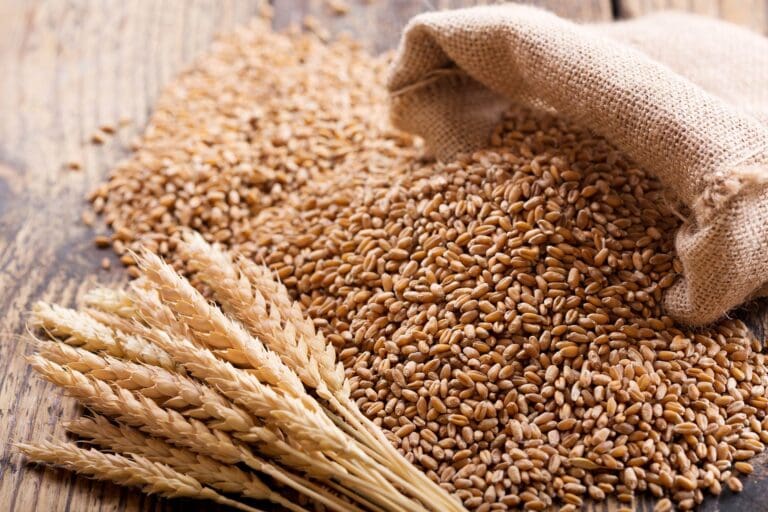As the food and agriculture landscape continues to evolve, understanding the economic implications is crucial to those leading the sector. Dr. Michael Swanson, Chief Agricultural Economist with Wells Fargo, brings extensive industry experience to the conversation. Ahead of his presentation at the upcoming Executive Conference in Las Vegas, we sat down with Swanson to discuss everything from the differentiated impact of tariffs on specific items, to the growing potential of biofuels and its impact on protein markets. He offers a compelling perspective on what’s shaping food and ag in 2025.
[Expana] Thank you for joining us, Michael. Can you share a bit about your background and current role?
[Michael Swanson] I have been fortunate to be Wells Fargo’s agricultural and food economist for the last quarter of a century. Wells Fargo’s footprint and appetite has always made it a major financier across the food chain. I help our customers think about things from an economics lens that are sometimes counterintuitive and surprising. Food and ag C-suite leaders are excellent at managing their day-to-day operations without much input from their bank, but when making those big multi-decade investments, we can really help. I produce long-term data and models that work well with their investment questions. It’s a great task to have those meaningful conversations. Luckily, I have been in the food and agricultural space for 40 years with organizations like BNSF Railway hauling grain, Cargill in South America trading grain and Land O’Lakes making dairy products before Wells Fargo.
[Expana] You’ll be speaking at the Executive Conference on the economy and the current state of affairs. Without giving too much away, what do you see as the most significant economic factor shaping 2025 so far?
[Michael Swanson] Everyone is talking about tariffs, of course, but each commodity and food is a world unto itself. One thing to keep clearly in mind is that no consumer in the world is more valuable than the United States for economic potential. That might sound presumptuous, but Americans have more spending power per capita than any other large population country. Monaco might have a higher GDP per capita, but the United States has 340 million high income consumers in the global market. We export only because we have to keep growing to use all our production potential, not because there is a better market for our food. If we keep that in mind, it will shape our market and investment choices.
[Expana] Tariffs have been a major discussion point for the food and agriculture sector this year. How do you anticipate these policies impacting the economy and industry?
[Michael Swanson] As I mentioned earlier, each commodity is a world unto itself. Take poultry, are we talking about chicken tenders or chicken feet? The entire broiler’s value is comprised of the breakout of the pieces, but they don’t equally impact the value and profitability. China for example is the largest food producer and consumer in the world. The Chinese consumer likes to add U.S. chicken feet to their menu, but they can certainly live without it.
Traders need to know what is the next best market for chicken feet. It might be another consumer market or the U.S. pet food industry, for instance.
Every single protein and breakout has the same dynamic, which makes it too simplistic to say ‘this must happen.’ After all is said and done, it will be a much more muted and complicated response than the headline reporting would have consumers believe.
[Expana] Beyond the economy, what other industry topics are you looking forward to discussing at this year’s Executive Conference?
[Michael Swanson] The impact of biofuels needs to be on the minds of the protein market. Ethanol and biodiesel have become the rival for feeding animals. In the case of corn, the economic contribution has as much value to the farmer as feeding protein. Keeping an eye on competitors for key input is a good idea. I will show how the growth is slowing in both of these fuels and remind the industry that the technology in electric vehicles will continue to improve faster than ever. This would be good news for the industry as these grains and oilseeds look for another next best buyer, who would be protein producers.
[Expana] As we move into the second half of 2025, what key trend or development in the food and agriculture industry are you keeping a close eye on?
[ Michael Swanson] Employment and wages are always the key for selling more of anything and at a higher price. The U.S. economy continues to transition into an automation and service-led-economy. Seventy percent of consumer spending is in the services sector. That makes it the economic growth engine that allows food retailers and restaurants to grow as well. So, I will be tracking that economic locomotive closely.
To hear more from Dr. Michael Swanson on the economy, tariffs and the agrifood industry join us at the 49th annual Executive Conference, May 5-7 at the Encore at Wynn in Las Vegas.
This historic event for the leaders and rising stars of the egg, poultry and red meat industries will offer strategic insight into topics such as pricing for major items, growing consumer demands and the impact of geopolitical developments on the industry. For tickets and the full agenda please visit: https://www.expanamarkets.com/events/executive-conference/.
Written by Robyn Gow



